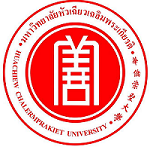Please use this identifier to cite or link to this item:
https://has.hcu.ac.th/jspui/handle/123456789/4680Full metadata record
| DC Field | Value | Language |
|---|---|---|
| dc.contributor.author | 姚诚 | - |
| dc.contributor.author | Yao Cheng | - |
| dc.contributor.author | 谢仁敏 | - |
| dc.contributor.author | Xie Renmin | - |
| dc.contributor.other | Huachiew Chalermprakiet University. College of Chinese Studies. Graduate Student | en |
| dc.contributor.other | Guangxi Arts University. P.R. China | en |
| dc.date.accessioned | 2025-10-18T08:32:04Z | - |
| dc.date.available | 2025-10-18T08:32:04Z | - |
| dc.date.issued | 2023 | - |
| dc.identifier.citation | วารสารวิชาการภาษาและวัฒนธรรมจีน 10, 2 (กรกฎาคม-ธันวาคม 2566) : 215-229. | en |
| dc.identifier.uri | https://has.hcu.ac.th/jspui/handle/123456789/4680 | - |
| dc.description | สามารถเข้าถึงบทความฉบับเต็ม (Full Text) ได้ที่ : https://so02.tci-thaijo.org/index.php/clcjn/article/view/261263/178311 | en |
| dc.description.abstract | 由于对外汉语文化课教学本质上是一种在传播者和接收者之间进行的传播活动,因而可以借鉴传播学研究的某些成果,以此发现传统文化课教学的问题症结,寻求获得更好的教学效果。本文借鉴朱利安的“之间说”,在反思传播研究演进路径和重新分析三种代表性传播模式的基础上,认为“间性”问题和“传播的共同体模式”,是传播研究的发展带给我们的重要启示。拉斯韦尔模式强调传播者的控制,没有注意到“间性”问题。融合模式开始注意到“间性”的价值,加强了对接收者主体性的关注。“间性”的作用进一步发挥,正在促成 传播者和接收者融为一体的共同体模式。本文认为,“间性”问题促进了传播研究的演变,“传播的共同体模式”呈现出理想的传播活动面貌,将这些理论资源与对外汉语文化课教学有机结合,设计新型文化课教学方案,可以为新时期对外汉语文化课教学的发展提供参考。 | en |
| dc.description.abstract | Since teaching Chinese as a foreign language is essentially a communication activity between the communicator and the receiver, it is possible to draw on some of the findings of communication studies to identify the problems of traditional culture teaching and to seek better teaching results. This article draws on Julian's “betweenness” theory, reflecting on the evolutionary path of communication research and re-analysing three representative models of communication, to argue that the issue of “betweenness” and the “community model of communication”, are important insights into the development of communication research. The Lasswell model emphasises the control of the communicator and fails to take note of the issue of "betweenness". The convergence model has begun to take note of the value of "betweenness" and has increased its focus on the subjectivity of the receiver. The role of “betweenness” has been further developed and is leading to a community model in which communicators and receivers are integrated. This article argues that the issue of "betweenness" has contributed to the evolution of communication research, and that the "community model of communication" presents an ideal picture of communication activities. Combining these theoretical resources with the teaching of Chinese as a foreign language and designing new cultural teaching programmes can provide a reference for the development of teaching Chinese as a foreign language in the new era. | en |
| dc.language.iso | zh | en |
| dc.publisher | มหาวิทยาลัยหัวเฉียวเฉลิมพระเกียรติ | en |
| dc.subject | ภาษาจีน -- การศึกษาและการสอน -- ไทย | en |
| dc.subject | Chinese language -- Study and teaching -- Thailand | en |
| dc.subject | 汉语 -- 学习和教学 -- 泰国 | en |
| dc.subject | นักศึกษาต่างชาติ | en |
| dc.subject | Students, Foreign | en |
| dc.subject | 国际学生 | en |
| dc.subject | การศึกษาระหว่างวัฒนธรรม | en |
| dc.subject | Cross-cultural studies | en |
| dc.subject | 跨文化教育 | en |
| dc.subject | วัฒนธรรมจีน | en |
| dc.subject | Chinese Culture | en |
| dc.subject | 中国文化 | en |
| dc.title | “间性”问题与“传播的共同体模式”——传播学研究之于对外汉语文化课教学的启示 | en |
| dc.title.alternative | “Betweenness” and “Community of Communication”:Implications of Communication Studies for Culture Course Instruction in Teaching Chinese as a Foreign Language | en |
| dc.type | Article | en |
| Appears in Collections: | College Of Chinese Studies - Articles Journals | |
Files in This Item:
| File | Description | Size | Format | |
|---|---|---|---|---|
| Betweenness-and-Community-of-Communication-Implications-of-Communication-Studies-for-Culture-Course-Instruction-in-Teaching-Chinese-as-a-Foreign-Language.pdf | 146.08 kB | Adobe PDF | View/Open |
Items in DSpace are protected by copyright, with all rights reserved, unless otherwise indicated.
